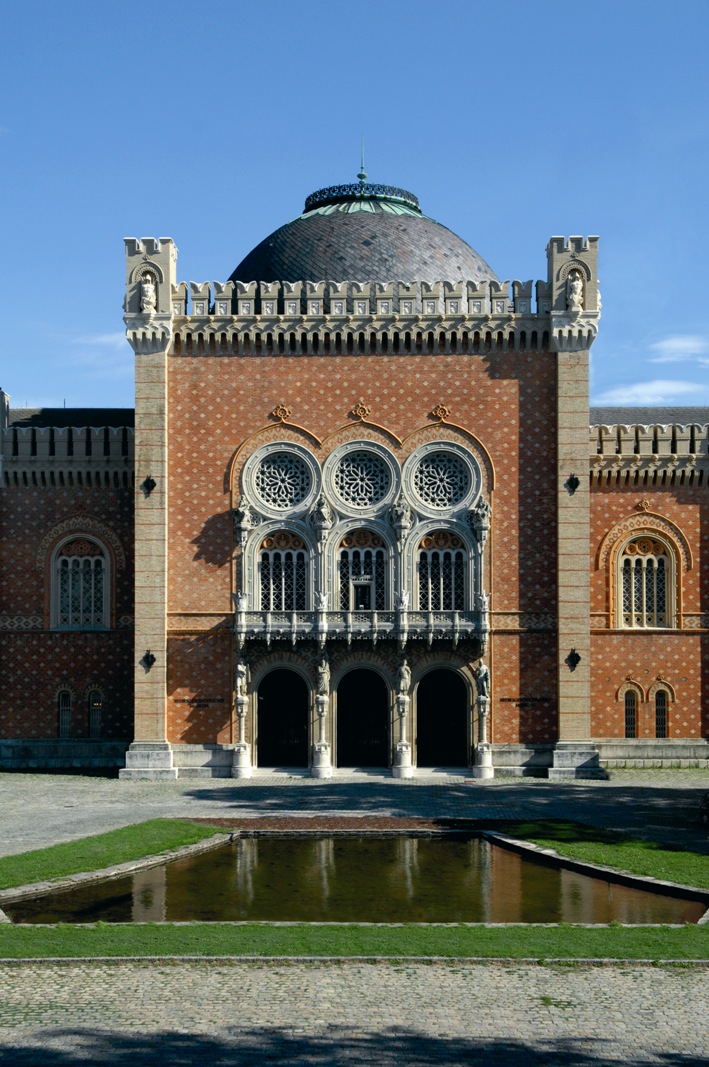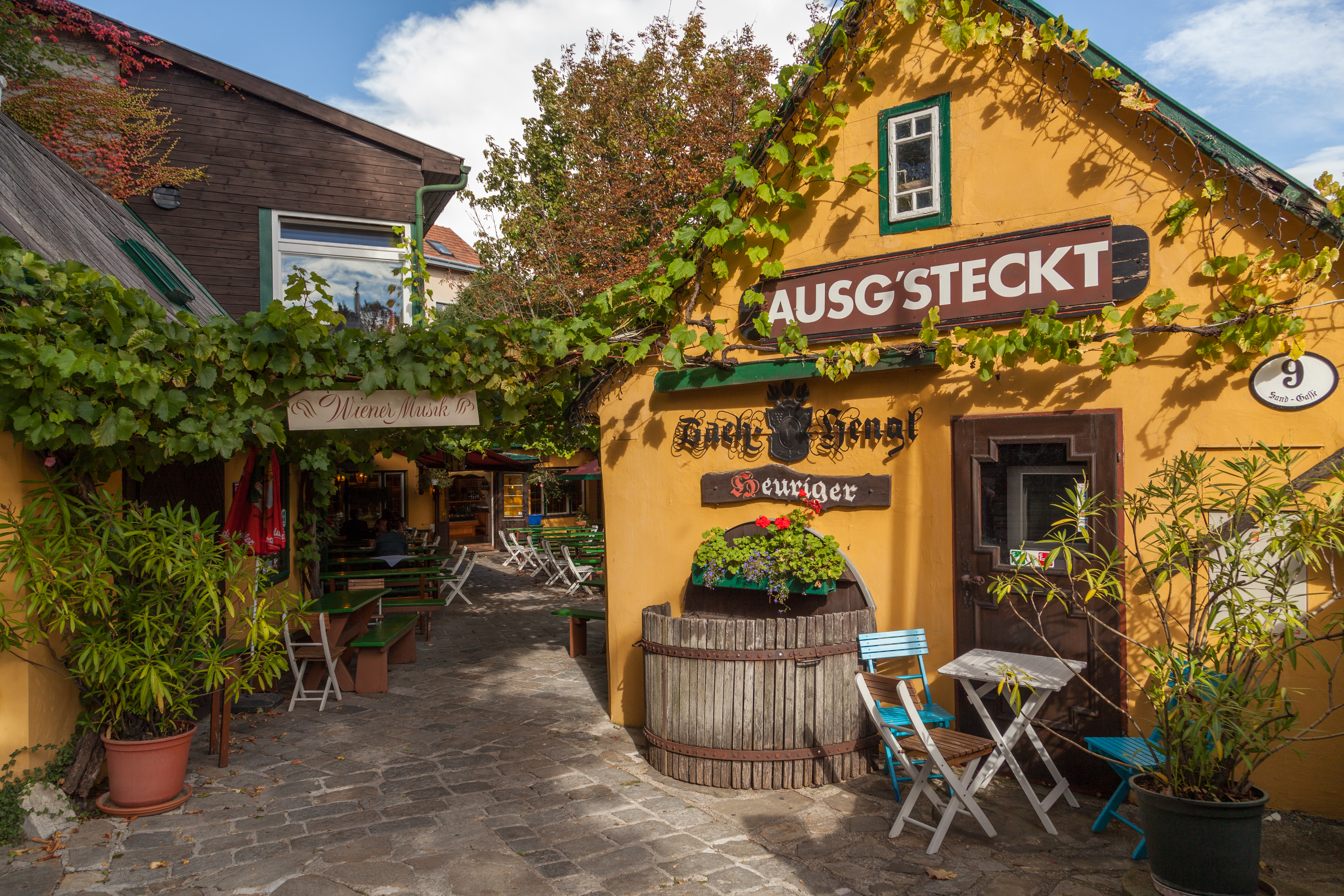|
Rudolf Alfred Höger
Rudolf Alfred Höger (12 February 1877 – 7 November 1930) was an Austrian painters, painter of genre art and War artist, war art. Biography Höger was born in Prostějov, Proßnitz, Moravia. Little is known about his life. It seems likely that, during World War I, he was a member of the group for art in the , the empire's press agency for war news, at least from 1914 to 1917. During this time, he created many works which are now in the collection of the Museum of Military History, Vienna, Heeresgeschichtliches Museum, mostly oil paintings on the Eastern Front (World War I), Eastern Front and the Balkans Campaign (World War I), Balkan Front.Heinrich Fuchs, ''Die österreichischen Maler des 19. Jahrhunderts'', Wien 1973, volume 2, page K 66. (The book has, in error: born in 1876 in Vienna, died there in 1928. An appendix corrected it.) He died in Vienna. Paintings Höger painted genre art with Nostalgia, nostalgic topics, such as ''Das Hofkonzert'' (The concert at court), a roco ... [...More Info...] [...Related Items...] OR: [Wikipedia] [Google] [Baidu] |
Heeresgeschichtliches Museum
The Museum of Military History – Military History Institute () in Vienna is the leading museum of the Austrian Armed Forces. It documents the history of Austrian military affairs through a wide range of exhibits comprising, above all, weapons, armours, tanks, aeroplanes, uniforms, flags, paintings, medals and badges of honour, photographs, battleship models, and documents. Although the museum is owned by the Federal Government, it is not affiliated with the Federal museums but is organised as a subordinate agency reporting directly to the Ministry of Defence and Sports.''Weißbuch 2012''. Amtliche Publikation der Republik Österreich/Bundesminister für Landesverteidigung und Sport, Wien 2013, S. 58 f. The museum building and its history The museum building (Arsenal object number 18) is the centrepiece of Vienna's Arsenal, a huge military complex previously consisting of a total of 72 buildings erected in the wake of the 1848/49 revolution. The Arsenal was the ... [...More Info...] [...Related Items...] OR: [Wikipedia] [Google] [Baidu] |
Rococo
Rococo, less commonly Roccoco ( , ; or ), also known as Late Baroque, is an exceptionally ornamental and dramatic style of architecture, art and decoration which combines asymmetry, scrolling curves, gilding, white and pastel colours, sculpted moulding, and ''trompe-l'œil'' frescoes to create surprise and the illusion of motion and drama. It is often described as the final expression of the Baroque movement. The Rococo style began in France in the 1730s as a reaction against the more formal and geometric Louis XIV style. It was known as the "style Rocaille", or "Rocaille style". It soon spread to other parts of Europe, particularly northern Italy, Austria, southern Germany, Central Europe and Russia. It also came to influence other arts, particularly sculpture, furniture, silverware, glassware, painting, music, theatre, and literature. Although originally a secular style primarily used for interiors of private residences, the Rococo had a spiritual aspect to it which led to ... [...More Info...] [...Related Items...] OR: [Wikipedia] [Google] [Baidu] |
1930 Deaths
Events January * January 15 – The Moon moves into its nearest point to Earth, called perigee, at the same time as its fullest phase of the Lunar Cycle. This is the closest moon distance at in recent history, and the next one will be on January 1, 2257, at . * January 26 – The Indian National Congress declares this date as Independence Day, or as the day for Purna Swaraj (Complete Independence). * January 28 – The first patent for a field-effect transistor is granted in the United States, to Julius Edgar Lilienfeld. * January 30 – Pavel Molchanov launches a radiosonde from Pavlovsk, Saint Petersburg, Slutsk in the Soviet Union. February * February 10 – The Việt Nam Quốc Dân Đảng launch the Yên Bái mutiny in the hope of ending French Indochina, French colonial rule in Vietnam. * February 18 – While studying photographs taken in January, Clyde Tombaugh confirms the existence of Pluto, a celestial body considered a planet until redefined as a dwarf planet ... [...More Info...] [...Related Items...] OR: [Wikipedia] [Google] [Baidu] |
1877 Births
Events January * January 1 – Queen Victoria is proclaimed Empress of India by the Royal Titles Act 1876, introduced by Benjamin Disraeli, the Prime Minister of the United Kingdom . * January 8 – Great Sioux War of 1876: Battle of Wolf Mountain – Crazy Horse and his warriors fight their last battle with the United States Cavalry in Montana. * January 20 – The Conference of Constantinople ends, with Ottoman Turkey rejecting proposals of internal reform and Balkan provisions. * January 29 – The Satsuma Rebellion, a revolt of disaffected samurai in Japan, breaks out against the new imperial government; it lasts until September, when it is crushed by a professionally led army of draftees. February * February 17 – Major General Charles George Gordon of the British Army is appointed Governor-General of the Sudan. March * March 2 – Compromise of 1877: The 1876 United States presidential election is resolved with the selection of Ru ... [...More Info...] [...Related Items...] OR: [Wikipedia] [Google] [Baidu] |
Austrian Male Painters
Austrian may refer to: * Austrians, someone from Austria or of Austrian descent ** Someone who is considered an Austrian citizen * Austrian German dialect * Something associated with the country Austria, for example: ** Austria-Hungary ** Austrian Airlines (AUA) ** Austrian cuisine ** Austrian Empire ** Austrian monarchy ** Austrian German (language/dialects) ** Austrian literature ** Austrian nationality law ** Austrian Service Abroad ** Music of Austria **Austrian School of Economics * Economists of the Austrian school of economic thought * The Austrian Attack variation of the Pirc Defence chess opening. See also * * * Austria (other) * Australian (other) Australian(s) may refer to: Australia * Australia, a country * Australians, citizens of the Commonwealth of Australia ** European Australians ** Anglo-Celtic Australians, Australians descended principally from British colonists ** Aboriginal Aus ... * L'Autrichienne (other) {{disambig Lan ... [...More Info...] [...Related Items...] OR: [Wikipedia] [Google] [Baidu] |
19th-century Austrian Male Artists
The 19th century began on 1 January 1801 (represented by the Roman numerals MDCCCI), and ended on 31 December 1900 (MCM). It was the 9th century of the 2nd millennium. It was characterized by vast social upheaval. Slavery was Abolitionism, abolished in much of Europe and the Americas. The First Industrial Revolution, though it began in the late 18th century, expanded beyond its British homeland for the first time during the 19th century, particularly remaking the economies and societies of the Low Countries, France, the Rhineland, Northern Italy, and the Northeastern United States. A few decades later, the Second Industrial Revolution led to ever more massive urbanization and much higher levels of productivity, profit, and prosperity, a pattern that continued into the 20th century. The Catholic Church, in response to the growing influence and power of modernism, secularism and materialism, formed the First Vatican Council in the late 19th century to deal with such problems an ... [...More Info...] [...Related Items...] OR: [Wikipedia] [Google] [Baidu] |
Heurigen
In eastern Austria, a ''Heuriger'' (; Austrian dialect pronunciation: Heiriga, Hungarian: Kurta kocsma) is a tavern where local winemakers serve their new wine under a special licence in alternating months during the growing season. Each state in Austria has slightly varying rules on how many Heuriger of a town can be open at any given time and for how long in total during the year. The ''Heurige'' are renowned for their atmosphere of ''Gemütlichkeit'' shared among a throng enjoying young wine, simple food, and – in some places – '' Schrammelmusik''. They correspond to the ''Straußwirtschaften'' in the German Rheinland, the ''Frasche'' in Friuli-Venezia Giulia, and ''Osmica'' in Slovenia. ''Heuriger'' is the abbreviation of "heuriger Wein" (this year's wine) in Austrian and Bavarian German. Originally, they were simple open-air taverns on the premises of winemakers, where people would bring along food and drink the new wine. Nowadays, the taverns are often situated ... [...More Info...] [...Related Items...] OR: [Wikipedia] [Google] [Baidu] |
Gaudeamus Igitur
"Gaudeamus igitur" (Latin for "So let us rejoice") or just "Gaudeamus", also known as "De brevitate vitae" ("On the Shortness of Life"), is a popular academic commercium song in many European countries, mainly sung or performed at university graduation ceremonies. Despite its use as a formal graduation hymn, it is a jocular, light-hearted composition that pokes fun at university life. The song is thought to originate in a Latin manuscript from 1287. It is in the tradition of ''carpe diem'' ("seize the day") with its exhortations to enjoy life. It was known as a beer-drinking song in many early universities and is the official song of many schools, colleges, universities, institutions, student societies and is the official anthem of the International University Sports Federation. Content The lyrics reflect an endorsement of the bacchanalian mayhem of student life while simultaneously retaining the grim knowledge that one day we will all die: . The song contains humorous and ir ... [...More Info...] [...Related Items...] OR: [Wikipedia] [Google] [Baidu] |
Grinzing
Grinzing () was an independent municipality until 1892 and is today a part of Döbling, the 19th district of Vienna. Wien.gv.at webpage (see below: References). Geography Location Grinzing lies in the northwest of Vienna and, with an area of 613.52 hectares, is the largest suburb in the district of Döbling. To the northeast, it borders on Josefsdorf; the border continues along the Wildgrube and the Schreiberbach stream towards the east, where it branches along the Springsiedelgasse and the Neugebauerweg to the south. The border then runs along the Hungerbergstraße to mark the boundary to Unterdöbling, before following the course of the Kaasgraben, which divides Grinzing from Sievering in the east. Finally, the border turns northwestward and continues via the Himmelstraße and the Spießweg to the edge of the city of Vienna, which separates Grinzing from Weidling. Topography Grinzing is characterised by numerous forested ridges of the Wienerwald (Vienna Woods) ... [...More Info...] [...Related Items...] OR: [Wikipedia] [Google] [Baidu] |
Heuriger
In eastern Austria, a ''Heuriger'' (; Austrian dialect pronunciation: Heiriga, Hungarian language, Hungarian: Kurta kocsma) is a tavern where local winemakers serve their new wine under a special licence in alternating months during the growing season. Each state in Austria has slightly varying rules on how many Heuriger of a town can be open at any given time and for how long in total during the year. The ''Heurige'' are renowned for their atmosphere of ''Gemütlichkeit'' shared among a throng enjoying young wine, simple food, and – in some places – ''Schrammelmusik''. They correspond to the ''Straußwirtschaften'' in the German Rheinland, the ''Frasche'' in Friuli-Venezia Giulia, and ''Osmica'' in Slovenia. ''Heuriger'' is the abbreviation of "heuriger Wein" (this year's wine) in German language, Austrian and Bavarian German. Originally, they were simple open-air taverns on the premises of winemakers, where people would bring along food and drink the new wine. Nowad ... [...More Info...] [...Related Items...] OR: [Wikipedia] [Google] [Baidu] |






